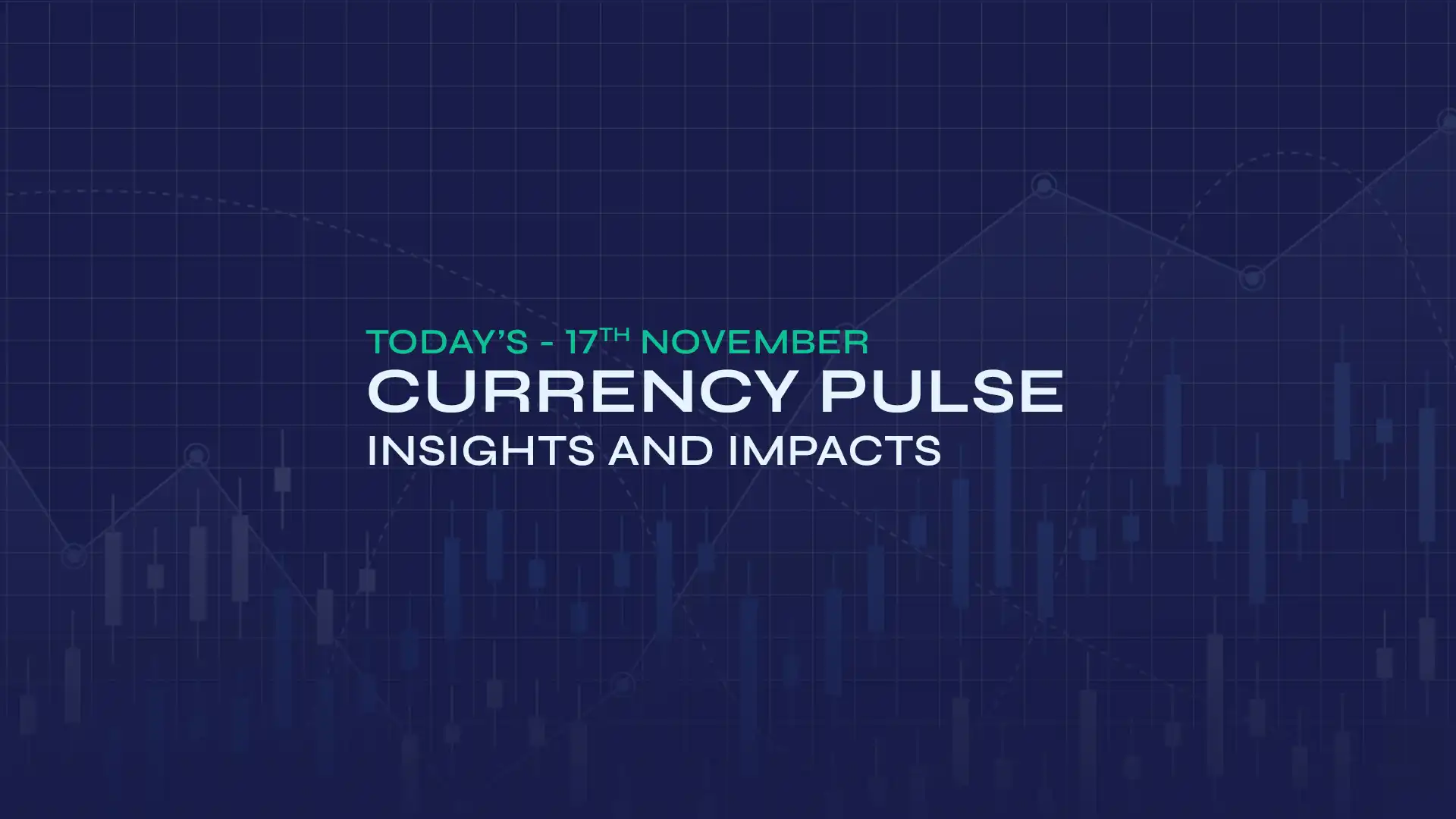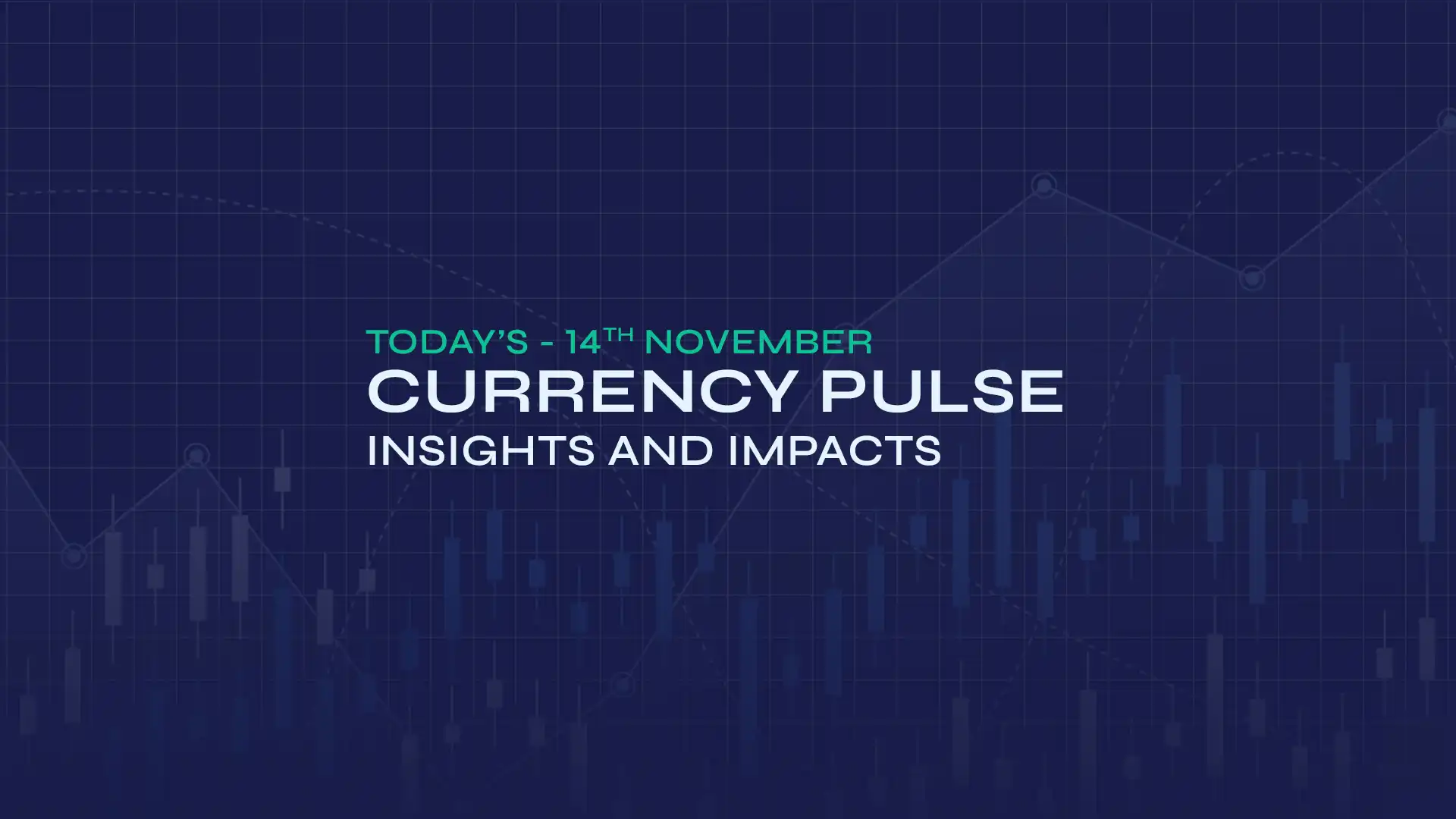EUR/GBP fluctuated near 0.8434 as investors reacted to the Purchasing Managers' Index (PMI) data from both the Eurozone and the United Kingdom (UK). Thursday's economic data from the HCOB's latest Purchasing Managers' Index (PMI) Survey revealed that the Eurozone manufacturing sector remained in contraction, while the services sector also followed suit in May. The Eurozone Manufacturing Purchasing Managers' Index (PMI) improved to 49.4 in May from 49 in April, surpassing the market estimate of 49.3. The bloc's Services PMI fell to 48.9 in May from 50.1 in April, coming in below the expected 50.3 and hitting a 16-month low.
The HCOB Eurozone PMI Composite contracted to 49.5 in May, following April's 50.4, while the market forecast was 50.7. The German manufacturing sector's activity picked up. However, the services sector deepened its contraction in May, as indicated by the preliminary business activity report published by the HCOB survey on Thursday. The HCOB Manufacturing PMI in Germany improved to 48.8 this month, compared with April's 48.4, but missed the estimate of 48.9. The measure reached a 33-month high. Meanwhile, the Services PMI dropped to 47.2 in May from 49 in April, with the market consensus predicting a 49.5 print for the reported period. This gauge reached a 30-month low. The HCOB Preliminary German Composite Output Index came in at 48.6 in May versus 50.1 in April and the expected 50.4. The index was at its lowest level in five months. The headline German IFO Business Climate Index rose to 87.5 in May from 86.9 in April, coming in slightly above the market forecast of 87.4. Meanwhile, the Current Economic Assessment Index worsened to 86.1 during the same period from 86.4 in April, falling short of the estimated 86.8 reading. The IFO Expectations Index, which indicates firms' projections for the next six months, rose to 88.9 in May compared with 87.4 in April and the expected 88. Moreover, the market anticipates that the European Central Bank (ECB) will adopt a dovish policy stance, which may continue to exert downward pressure on the Euro.
On the other hand, a rise in inflationary pressures in the UK may prompt the Bank of England (BoE) to compromise its expansionary monetary policy stance. The annual headline Consumer Price Index (CPI) rose by 3.5% in April, following a recorded 2.6% increase in March, as indicated by data from the Office for National Statistics (ONS) on Wednesday. The core CPI, which excludes volatile food and energy items, climbed 3.8% year-on-year (YoY) during the same period, compared to a 3.4% rise in March, surpassing the expected figure of 3.6%. Services inflation strengthened to 5.4% YoY in April, up from 4.7% in March. Meanwhile, the monthly UK CPI inflation surged to 1.2% in April, up from 0.3% in March, while markets had predicted a reading of 1.1%.
Today's UK S&P Global Purchasing Managers' Index (PMI) data and HCOB Purchasing Managers' Index (PMI) from the Eurozone will shape the market sentiment around the EUR/GBP exchange rate.
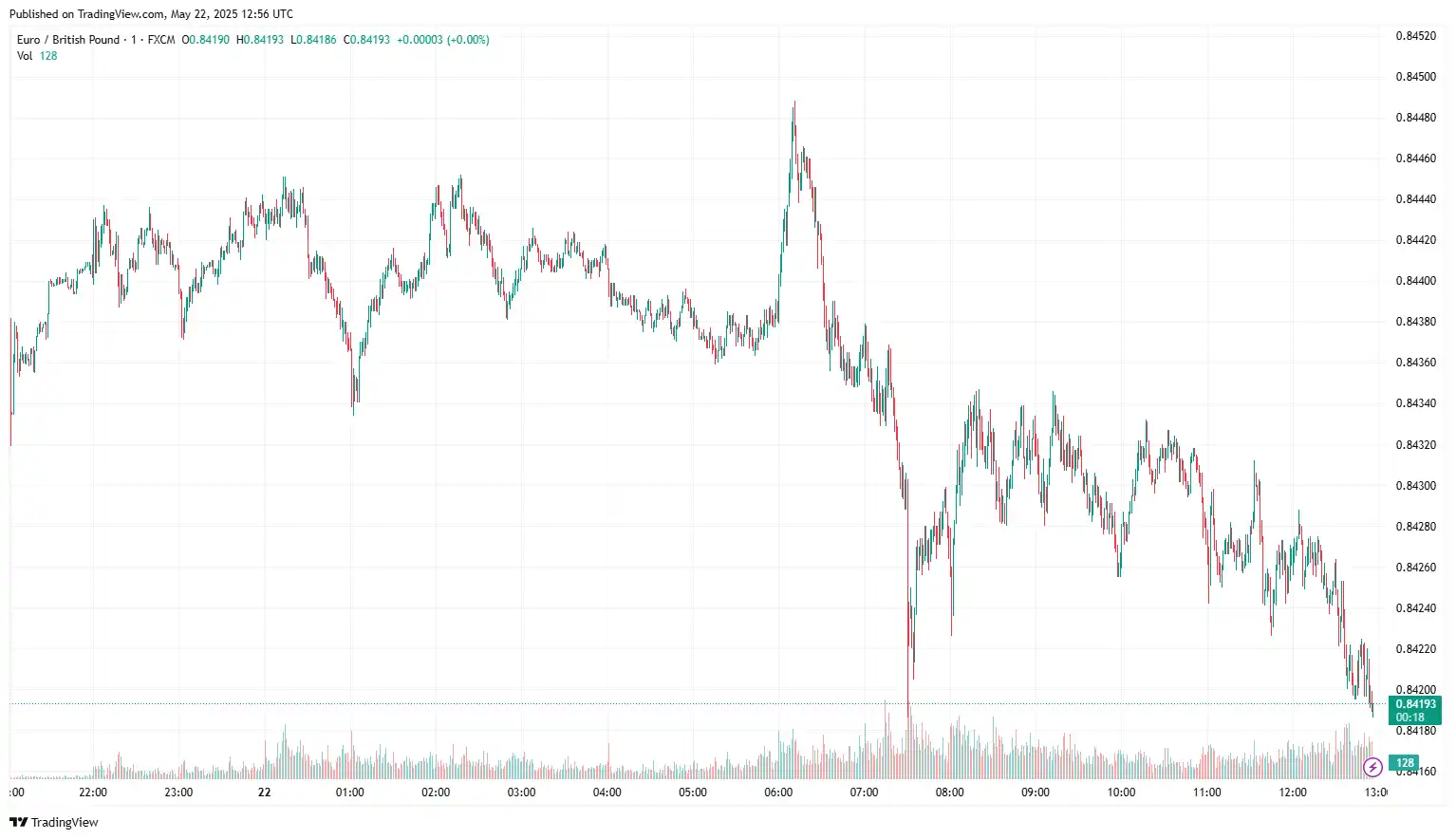
AUD/USD Wobbles after Australia's Judo Bank PMI
AUD/USD hovered near 0.6442 following the release of Australia's preliminary S&P Global Purchasing Managers' Index (PMI) data. On Thursday, Judo Bank and S&P Global revealed that the primary reading of the Manufacturing Purchasing Managers' Index (PMI) printed at 51.7 in May, unchanged from the previous figure of 51.7. The Judo Bank Australian Services PMI fell to 50.5 in May from the prior reading of 51.0, while the Composite PMI decreased to 50.6 in May, down from 51.0. On Tuesday, the Reserve Bank of Australia (RBA) trimmed its Official Cash Rate (OCR) by 25 basis points, lowering it from 4.10% to 3.85% during its May policy meeting, which matched market expectations. The RBA's monetary policy statement focused on the rising global trade tensions that pose a significant downside risk to the economy. Moreover, the bank has revised the global growth forecast amid the uncertain economic outlook stemming from US tariff policies. RBA Governor Michele Bullock emphasised the importance of controlling inflation while expressing confidence in the RBA's capacity to address the current inflationary pressures during a press conference following the policy announcement. She described the rate cut as a proactive step taken with assurance, stating it was the appropriate response to the current economic conditions. Bullock also noted that the Board is prepared to implement further measures if needed, suggesting that additional adjustments could be on the horizon. The risk-averse Australian dollar continues to decline amid rising political instability in Australia, as the opposition coalition has fragmented following the National Party's exit from its alliance with the Liberal Party. Simultaneously, the ruling Labour Party has strengthened its position with a more robust mandate, capitalising on the Opposition's crisis.
On a global scale, growing optimism regarding a 90-day US-China trade truce and expectations for new trade agreements with other nations continue to support the Aussie. On Tuesday, the PBoC announced a reduction in its Loan Prime Rates (LPRs). The one-year LPR fell from 3.10% to 3.00%, while the five-year LPR declined from 3.60% to 3.50%. In April, China's retail sales increased by 5.1% year-on-year (YoY), falling short of the 5.5% forecast and down from 5.9% in March. On Wednesday, China's Commerce Ministry stated that US measures on advanced chips are 'typical of unilateral bullying and protectionism.' Chinese authorities are investigating whether the United States will correct its practices.
On the other hand, investors are looking ahead to May's advanced US S&P Purchasing Managers' Index (PMI) for new insights into USD movements. The House is scheduled to vote on President Donald Trump's "One Big, Beautiful Bill" this Thursday. It could raise the federal deficit by $3 trillion to $5 trillion over the next decade if approved. This raises concerns about the deteriorating US fiscal outlook, affecting investor sentiment, and influencing the greenback.
In today's session, the Australian inflation numbers and the advanced US S&P Purchasing Managers' Index (PMI) will influence the AUD/USD exchange rate.
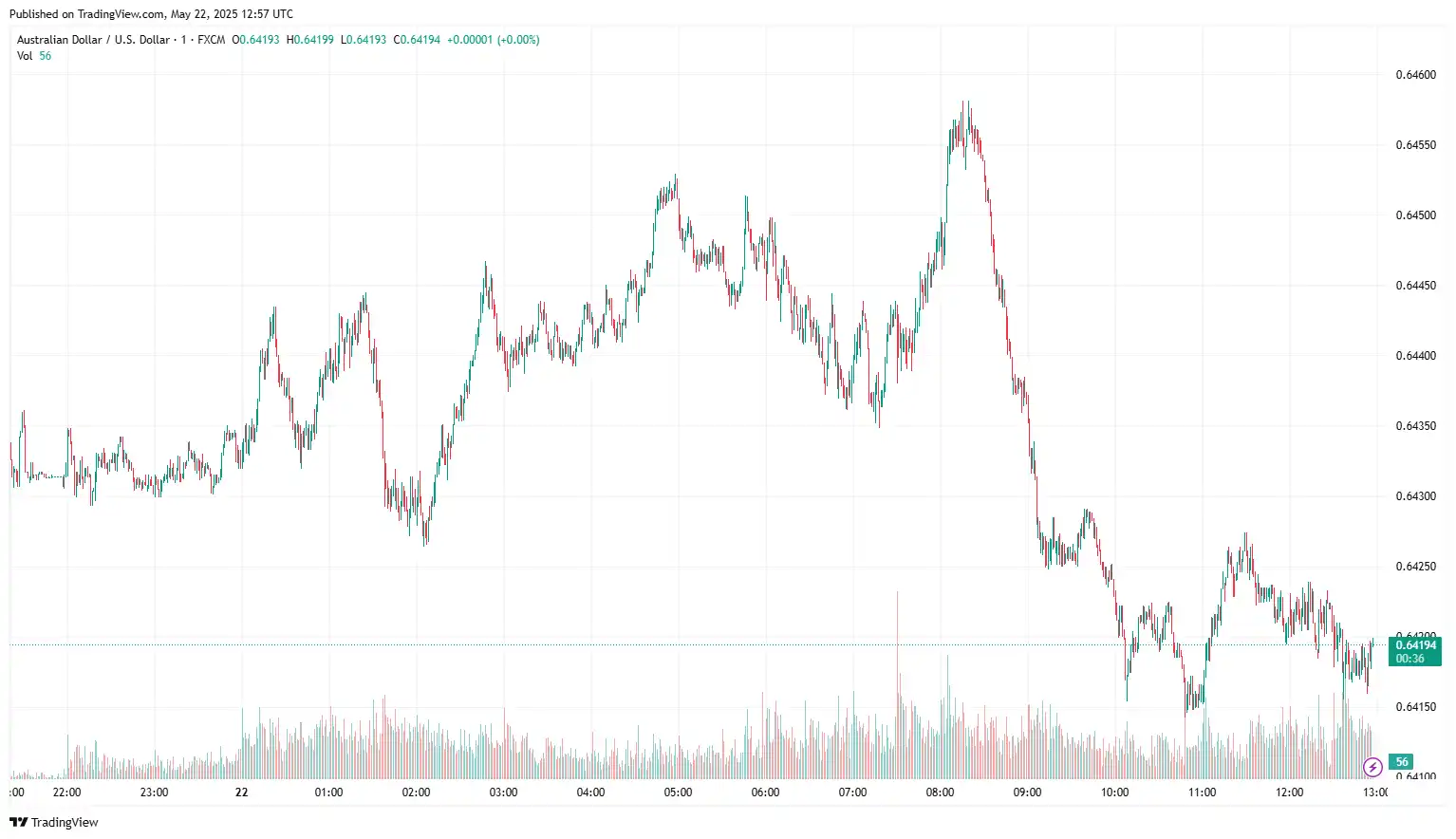
EUR/USD Subdued After HCOB PMI for Eurozone
EUR/USD struggled near 1.1311 following the release of the HCOB Purchasing Managers' Index (PMI) for the Eurozone. Thursday's preliminary business activity report published by the HCOB survey showed that German manufacturing sector activity picked up, while the services sector deepened its contraction in May. The HCOB Manufacturing PMI in the Eurozone's leading economy improved to 48.8 this month, compared to April's 48.4, falling short of the estimate of 48.9. The measure reached a 33-month high. Meanwhile, the Services PMI dropped to 47.2 in May from 49 in April, with the market consensus expecting a print of 49.5 for the reported period. The gauge hit a 30-month low. The HCOB Preliminary German Composite Output Index registered 48.6 in May, down from 50.1 in April and below the expected 50.4. This index marked its lowest level in five months.
European Central Bank Governing Council member Klaas Knot said on Tuesday that the medium-term inflation outlook is too uncertain to say whether the ECB needs to cut key rates again in June. "I can't exclude that we will decide to have another rate cut in June, but I also can't confirm it," Knot said, adding that he expects the revised staff projections to show lower inflation for this year and next year. European Central Bank (ECB) policymaker Martins Kazaks said on Wednesday, "The ECB will soon reach terminal rate if baseline holds." He also added, "Interest rate cuts are nearing an end, assuming inflation stabilises at 2% over the coming months. It's important to analyse alternative scenarios amid the trade uncertainty. Suppose either an inflationary or deflationary risk scenario materialises. In that case, monetary policy will react accordingly." European Central Bank (ECB) board member Isabel Schnabel said on Tuesday, "Disinflation is on track. Still, new shocks are posing new challenges," adding that tariffs may be disinflationary in the short run but pose upside risks over the medium term. The appreciation of the Euro is a historic opportunity to foster the international role of the Euro.
On the greenback's side, the USD continues to be undermined by the cautious stance of Federal Reserve (Fed) officials regarding the economic outlook and business sentiment. On Friday, Moody's downgraded the US long-term issuer and senior unsecured ratings from Aaa to Aa1 due to the escalating $36 trillion US government debt burden. The House Rules Committee approved President Donald Trump's expansive tax-cut bill. They announced that a full House floor vote on the Trump tax cut bill is expected to occur within hours. The bill received support from the Committee with an 8-4 vote after a lengthy 22-hour session on Wednesday. Republican leaders scheduled two votes to initiate the debate and to pass the bill before dawn on Thursday, according to Reuters. Cleveland Fed President Beth Hammack and San Francisco Fed President Mary C. Daly expressed increasing concerns about the US economy during a panel hosted by the Federal Reserve Bank of Atlanta. Despite key economic indicators remaining robust, both officials pointed out a decrease in consumer and corporate confidence and attributed part of this shift to US trade policies.
The ECB Monetary Policy Meeting Accounts and the S&P Global preliminary May Purchasing Managers' Index (PMI) for the United States will be significant factors influencing the EUR/USD exchange rate.
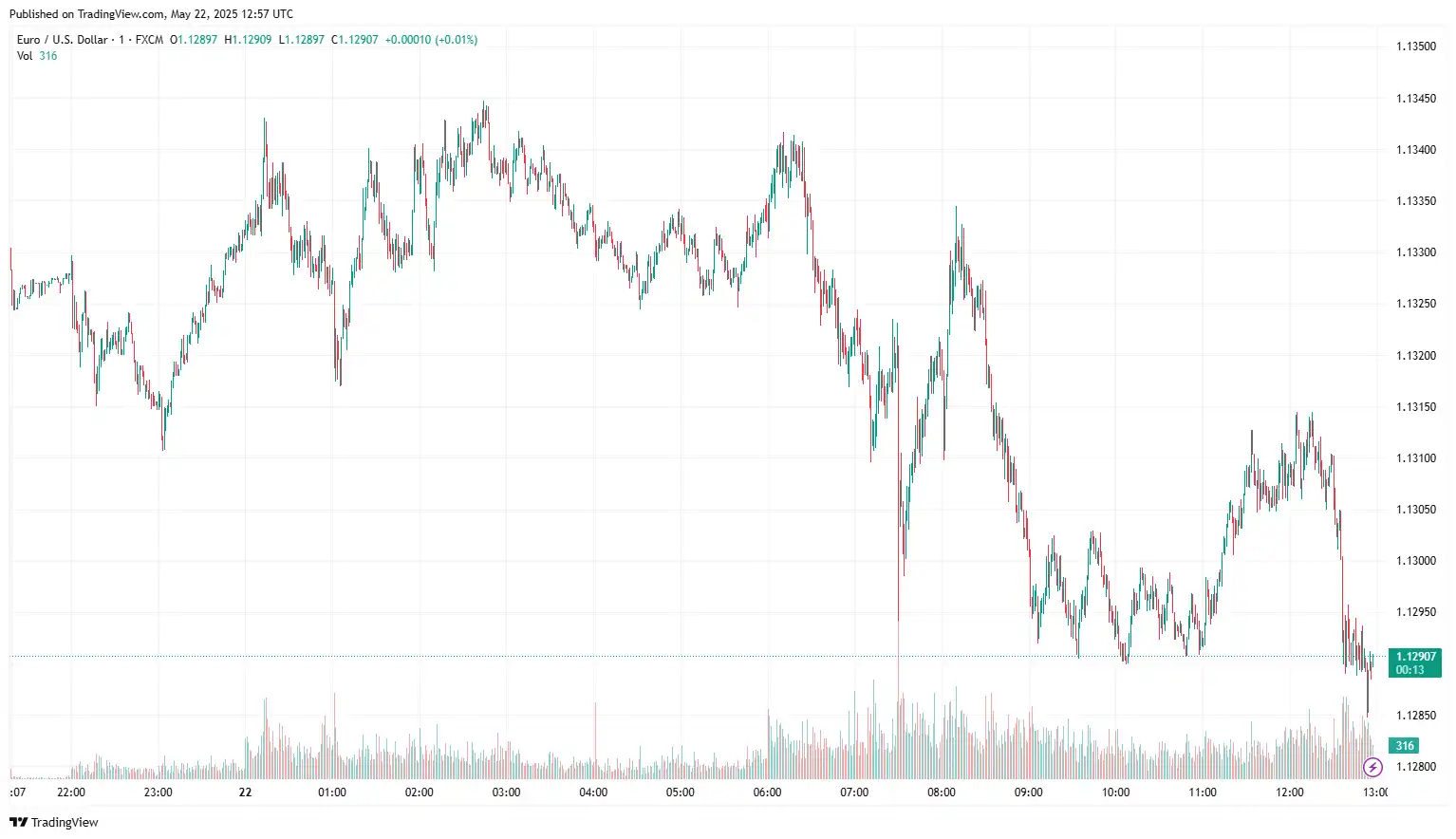
EUR/JPY Sinks Due to Rising Odds of BoJ Rate Hikes
EUR/JPY weakened to near 161.97. Japan's positive Machinery Orders data increase the likelihood of further interest rate hikes by the Bank of Japan (BoJ), alleviating recession worries and enhancing optimism for an economic recovery. Japan's Core Machinery Orders, a key leading indicator of capital spending over the next six to nine months, rose by 13.0% in March, defying forecasts of a 1.6% decline and marking the highest level in nearly two decades. The au Jibun Bank flash manufacturing purchasing managers' index rose to 49.0 in May, up from April's final figure of 48.7. However, it remains below the 50.0 mark that distinguishes growth from contraction for the 11th consecutive month. Meanwhile, the au Jibun Bank flash services PMI decreased to 50.8 in May, down from 52.4 in April, reflecting slower growth in new business, export business, and employment. As a result, overall business activity contracted for the second time in three months, with the au Jibun flash composite output index dropping to 49.8 in May from 51.2 in April. Japan's trade balance unexpectedly slipped into a deficit of ¥115.8 billion in April, down from a surplus of ¥559.4 billion in the previous month. Bank of Japan (BoJ) board member Asahi Noguchi said on Thursday that the "recent rise in long-term rates likely won't have an impact on our new bond taper plan to be decided in June."
On the Euro's front, Thursday's economic data from the HCOB's latest Purchasing Managers' Index (PMI) Survey showed that the Eurozone manufacturing sector remained in contraction territory, while the services sector also slipped into contraction in May. The Eurozone Manufacturing PMI rose slightly to 49.4 in May from 49 in April, beating the market forecast of 49.3. In contrast, the bloc's Services PMI declined to 48.9 in May from 50.1 in April, missing the expected 50.3 and marking a 16-month low. The HCOB Eurozone PMI Composite also slipped into contraction, falling to 49.5 in May from 50.4 in April, below the market projection of 50.7. In Germany, manufacturing activity improved, while the services sector experienced a deeper contraction in May, according to HCOB's preliminary business activity report released Thursday. The German Manufacturing PMI edged up to 48.8 in May from 48.4 in April, though slightly below the 48.9 forecast, and reached a 33-month high. Meanwhile, the Services PMI declined to 47.2 in May from April's 49, falling short of the anticipated 49.5 and marking a 30-month low. The HCOB Preliminary German Composite Output Index dropped to 48.6 in May from 50.1 in April, missing the expected 50.4 and hitting a five-month low. Separately, the headline German IFO Business Climate Index increased to 87.5 in May from 86.9 in April, slightly ahead of the expected 87.4. However, the Current Economic Assessment Index fell to 86.1 from 86.4 in April, below the forecast of 86.8. The IFO Expectations Index, reflecting firms' outlook for the next six months, rose to 88.9 in May from 87.4 in April, exceeding the expected 88. Meanwhile, expectations remain that the European Central Bank (ECB) will maintain a dovish policy stance, potentially continuing to weigh on the Euro.
Broader market sentiment around Japan's upbeat Machinery Orders data and HCOB Purchasing Managers' Index (PMI) data will drive the EUR/JPY exchange rate.
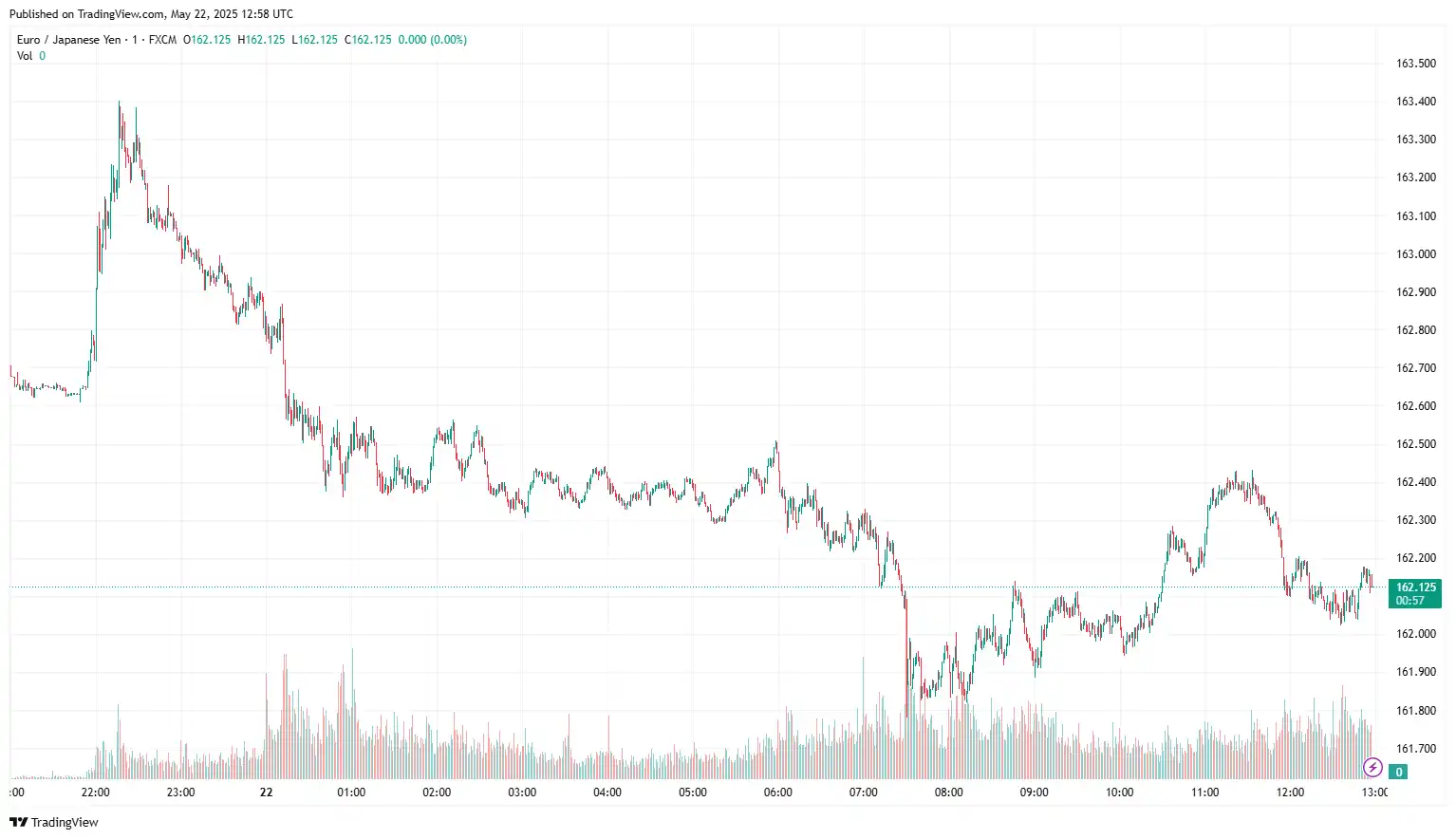
Stay Ahead in the Currency Game
Whether you're a daily FX trader or handle international transactions regularly, our 'Currency Pulse' newsletter delivers the news you need to make more informed decisions. Receive concise updates and in-depth insights directly in your LinkedIn feed.
Subscribe to 'Currency Pulse' now and never miss a beat in the currency markets!
Ready to act on today’s insights? Get a free quote or give us a call on: +44 (0)20 7740 0000 to connect with a dedicated portfolio manager for tailored support.
Important Disclaimer: This blog is for informational purposes only and should not be considered financial advice. Currency Solutions does not take into account the investment objectives, financial situation, or specific needs of any individual readers. We do not endorse or recommend any specific financial strategies, products, or services mentioned in this content. All information is provided “as is” without any representations or warranties, express or implied, regarding its accuracy, completeness, or timeliness.



